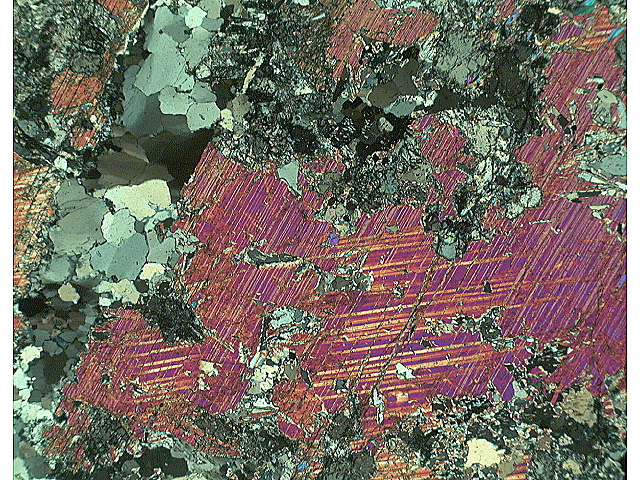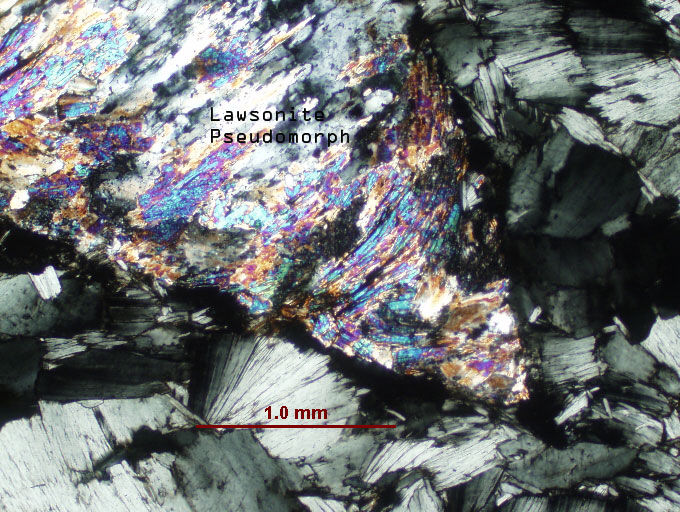 |
Lawsonite specimen in XPL |
 |
Lawsonite pseudomorph in PPL and XPL |
|
|
||
|
|
|
|
| Formula | CaAl2(Si2O7)(OH)2 H2O | Same composition as anorthite, with (AlO.OH) octahedra linked by Si2O7 groups. Ca2+ and H2O molecules are located between these polyhedra. |
| Crystal System | Orthorhombic | |
| Crystal Habit | Tabular or prismatic crystals | Frequently twinned polysynthetically on {110} |
| Cleavage | Perfect cleavage {010} and {001} Poor cleavage {110} |
|
| Color/Pleochroism | Colorless, pale blue to bluish-grey. Vitreous to greacy luster. Transluscent. | Pleochroism includes colorless, blue, and yellow. |
| Optic Sign | Biaxial (+) | |
| 2V | 76-84 |
|
| Optic Orientation | X = a Z = c |
|
| Refractive Indices
alpha = beta = gamma = delta = |
1.665 1.674 1.684 0.0130-0.020 |
|
| Max Birefringence | 0.0190-0.0210 | |
| Elongation | Elongated along c | |
| Extinction | Lengthfast extinction parallel with elongation direction | If measred against cleavage, may become symmetrical depending on orientation. |
| Dispersion | r > v | |
| Distinguishing Features | High hardness (8). |
|
| Occurrence | Lawsonite is a typical mineral of the glaucophane schist facies associated with chlorite, titanite, glaucophane, quartz, epidote, and garnet. Also found as a secondary mineral in altered gabbros and diorates.Generally located on the Tiburon Peninsula in San Francisco Bay, California. Lawsonite is a common constuent of schists and gneisses formed under high pressure and low temperature. Common in low grade mafic metamorphic rocks. |
|
| Editors | Julianne Zimmerman ('06) | |
 |
Lawsonite specimen in XPL |
 |
Lawsonite pseudomorph in PPL and XPL |